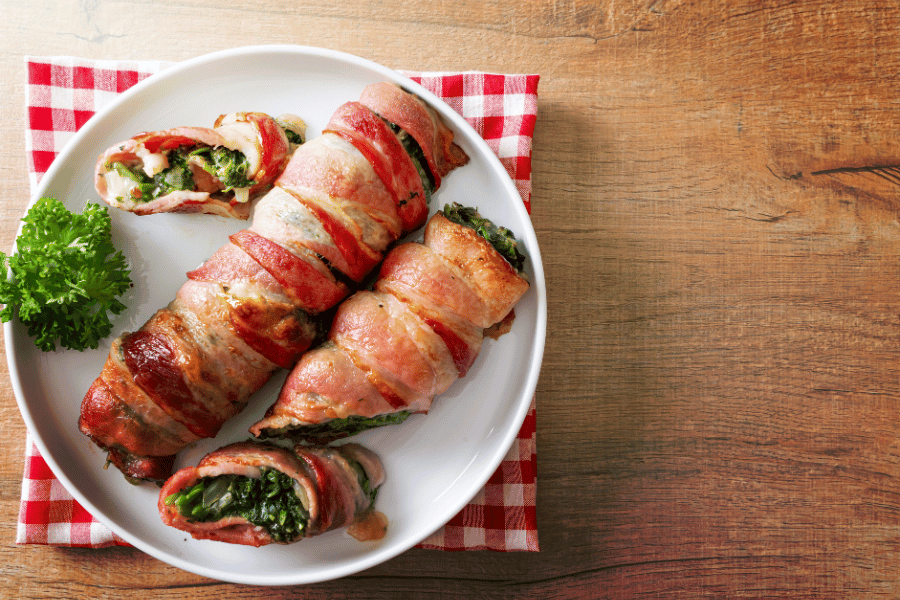The keto diet has become a buzzword in the world of weight loss and nutrition. This diet, known for its low carbohydrate and high fat approach, has been gaining popularity as a means to effectively lose weight. The core principle of the keto diet is to push the body into a state of ketosis, where it burns fat for energy instead of carbohydrates. This metabolic state is typically achieved by significantly reducing carbohydrate intake and increasing fat consumption.
How does the keto diet aid in weight loss? By cutting down on carbs, your body switches to burning fat as its primary energy source. This shift not only aids in fat burning but also in reducing insulin levels, which further enhances weight loss and metabolic efficiency.
Numerous studies and health experts have highlighted the effectiveness of the keto diet to lose weight. It’s not just about shedding pounds; it also involves a transformation in how your body processes food and energy. In the following sections, we will explore the science behind the keto diet, its benefits, and practical tips and recipes to help you successfully embark on this weight loss journey.

keto diet to lose weight
The Science Behind Keto Diet and Weight Loss
Understanding the role of ketosis is crucial when exploring how the keto diet aids in weight loss. Ketosis is a metabolic state where the body, due to a lack of carbohydrates, starts to burn fat for energy, producing ketones in the process. This shift from using carbohydrates to fats as the primary energy source is what drives weight loss on the keto diet.
Understanding Ketosis
- When carbohydrate intake is significantly reduced, the body’s glucose reserves deplete, forcing it to seek an alternative fuel source. This leads to the burning of stored fats, resulting in the production of ketones.
- Ketones are molecules that can be used for energy by various tissues in the body, including the brain, which cannot directly utilize fat for energy.
- Achieving and maintaining ketosis is key to the success of the keto diet. This requires careful monitoring of carbohydrate intake to ensure it remains low enough to sustain ketosis.
Benefits of a Low-Carb, High-Fat Diet
- Weight Loss: The keto diet is effective for weight loss as it reduces appetite and increases fat burning.
- Improved Blood Sugar and Insulin Levels: It’s beneficial for those with insulin resistance or type 2 diabetes, as it can lower blood sugar levels and improve insulin sensitivity.
- Enhanced Brain Function: Ketones are a more efficient fuel source for the brain, and many individuals report improved focus and mental clarity on a keto diet.
- Increased Energy Levels: After the initial adaptation period, many people experience a significant increase in energy levels and decreased fatigue.
That while the keto diet can be highly effective for weight loss, it’s not suitable for everyone. It’s crucial to consult with a healthcare professional before starting any new diet, especially one as specific as the keto diet.

keto diet to lose weight
Preparing for a Keto Diet
Embarking on a keto diet to achieve weight loss requires careful planning and preparation. Here are essential steps to set up your kitchen and meal plans for a successful keto journey.
Essential Pantry Staples for a Keto Kitchen
- Healthy Fats: Coconut oil, olive oil, avocados, and butter are staples for cooking and adding flavor.
- Low-Carb Vegetables: Leafy greens like spinach and kale, along with broccoli, cauliflower, and zucchini, should be your go-to veggies.
- Quality Proteins: Stock up on grass-fed meat, poultry, fish, and eggs for your protein needs.
- Nuts and Seeds: Almonds, chia seeds, and flaxseeds are great for snacking and adding to meals.
- Dairy Products: Cheese, heavy cream, and Greek yogurt (in moderation) can be part of your keto diet.
- Sweeteners: Stevia or erythritol can replace sugar for those times you need a sweet touch.
Tips for Meal Planning and Grocery Shopping
- Plan Your Meals: Before grocery shopping, plan your meals for the week. This helps in buying only what you need, reducing waste and temptation.
- Read Labels Carefully: Look for hidden sugars and carbs in packaged foods.
- Focus on Whole Foods: Prioritize whole, unprocessed foods to maximize nutrient intake and avoid additives that could disrupt ketosis.
- Prep in Advance: Meal prepping can save time and make it easier to stick to your diet, especially during busy days.
- Stay Hydrated: Remember to drink plenty of water, as a low-carb diet can lead to increased water loss.
By setting up your kitchen with these keto-friendly staples and planning your meals, you’ll be well-equipped to start your keto diet journey. In the next section, we’ll dive into 10 must-try keto recipes that are not only delicious but also perfect for aiding in weight loss.
10 Must-Try Keto Recipes for Weight Loss
Embarking on a keto diet to lose weight doesn’t mean sacrificing flavor. Here are 10 delicious keto-friendly recipes that are sure to keep your taste buds happy while aiding your weight loss journey.
Here’s an example of a comparison table for these recipes:
| Recipe Name | Ingredients | Preparation Time | Calories per Serving | Net Carbs per Serving | Protein per Serving | Fat per Serving | Difficulty Level |
|---|---|---|---|---|---|---|---|
| 1. Keto Avocado and Bacon Eggs | Avocado, bacon, eggs, salt, pepper | 20 minutes | 350 | 2g | 15g | 30g | Easy |
| 2. Keto Chicken Alfredo Zucchini Noodles | Chicken breast, zucchini, heavy cream, Parmesan cheese, garlic | 30 minutes | 400 | 4g | 25g | 30g | Moderate |
| 3. Keto Spinach and Feta Stuffed Chicken | Chicken breast, spinach, feta cheese, olive oil, garlic | 40 minutes | 350 | 3g | 40g | 25g | Moderate |
| 4. Keto Cauliflower Pizza | Cauliflower, mozzarella cheese, eggs, pizza sauce, pepperoni | 45 minutes | 250 | 4g | 15g | 20g | Moderate |
| 5. Keto Broccoli and Cheddar Soup | Broccoli, cheddar cheese, heavy cream, chicken broth | 35 minutes | 300 | 5g | 12g | 25g | Easy |
| 6. Keto Grilled Salmon with Asparagus | Salmon fillet, asparagus, olive oil, lemon, garlic | 25 minutes | 350 | 4g | 30g | 20g | Easy |
| 7. Keto Shrimp Scampi | Shrimp, butter, garlic, lemon juice, parsley | 20 minutes | 250 | 2g | 20g | 18g | Easy |
| 8. Keto Thai Green Curry Chicken | Chicken thighs, coconut milk, green curry paste, vegetables | 40 minutes | 400 | 6g | 20g | 30g | Moderate |
| 9. Keto Beef and Broccoli Stir-Fry | Beef sirloin, broccoli, soy sauce, garlic, ginger | 30 minutes | 350 | 5g | 25g | 25g | Moderate |
| 10. Keto Chocolate Avocado Mousse | Avocado, cocoa powder, almond milk, sweetener | 15 minutes | 200 | 3g | 3g | 20g | Easy |

keto diet to lose weight
Balancing Macronutrients in Keto Recipes
A successful keto diet for weight loss hinges on effectively managing your intake of macronutrients – carbohydrates, fats, and proteins. Understanding how to calculate net carbs and prioritize healthy fats and proteins is crucial.
Calculating Net Carbs
- Net Carbs: This is the total carbohydrates minus the fiber and sugar alcohols. For a food item, subtract the grams of fiber and sugar alcohols from the total carbohydrates to get the net carbs.
- Why Net Carbs: Fiber and most sugar alcohols do not raise blood sugar levels, so they are not counted towards your daily carb limit on a keto diet.
- Reading Labels: Always check food labels for carbohydrate and fiber content to accurately calculate net carbs.
Importance of Healthy Fats and Proteins
- Healthy Fats: These are vital on a keto diet as they make up a large portion of your calorie intake. Sources include avocados, nuts, seeds, olive oil, and fatty fish. They help in feeling full and satisfied.
- Proteins: Essential for muscle maintenance and repair. Choose high-quality sources like grass-fed meat, poultry, fish, and eggs. Be mindful of protein intake, as too much can be converted into glucose, potentially hindering ketosis.
- Balance: While fats are the mainstay of the keto diet, balancing them with adequate protein and minimal carbs is key. The general guideline is to consume 70-80% of calories from fat, 15-20% from protein, and 5-10% from carbs.
Balancing macronutrients is not just about adhering to ratios; it’s also about choosing quality sources that provide other essential nutrients.
Common Mistakes to Avoid on a Keto Diet
While the keto diet can be highly effective for weight loss, certain pitfalls can hinder your progress. Being aware of these common mistakes can help you stay on track and achieve better results.
Overconsuming Carbs
- It’s easy to unintentionally eat more carbs than intended, especially if you’re not carefully tracking your food intake. Hidden carbs in sauces, dressings, and packaged foods can quickly add up.
- To avoid this, read food labels diligently, measure servings, and use a food tracking app if necessary.
Neglecting Hydration and Electrolytes
- On a keto diet, your body excretes more water, and with it, electrolytes such as sodium, potassium, and magnesium. This can lead to dehydration and electrolyte imbalances.
- To prevent this, increase your water intake and consider supplementing with electrolytes, especially during the initial stages of the diet.
Other Common Mistakes
- Ignoring Fiber: A low intake of fiber can lead to digestive issues. Include low-carb, high-fiber vegetables in your diet.
- Consuming Too Much Protein: Excessive protein can be converted into glucose, which can take you out of ketosis. Monitor your protein intake.
- Neglecting Fat Quality: Opt for healthy fats like olive oil, avocados, and nuts, instead of unhealthy fats like processed vegetable oils.
- Skipping Meals or Under-eating: While keto can reduce appetite, eating too little can slow down metabolism and hinder weight loss.
By steering clear of these common mistakes, you can ensure a smoother and more effective keto journey.

Keto Cauliflower Pizza
Tracking Your Progress
Successfully adhering to a keto diet to lose weight involves more than just following the diet; it’s also about tracking and assessing your progress to make necessary adjustments. Here are some key ways to effectively monitor your journey.
How to Measure Weight Loss Effectively
- Scale: Regularly weighing yourself is the most direct way to track weight loss. However, weight can fluctuate daily due to various factors, so it’s important not to get discouraged by minor fluctuations.
- Body Measurements: Measuring different parts of your body (like waist, hips, and thighs) can give you a better idea of fat loss, even when the scale doesn’t show a significant change.
- Body Fat Percentage: This is a more accurate indicator of health than weight alone. It can be measured using body fat scales or calipers.
- Photographic Progress: Taking regular photos of yourself can be a motivating way to visually track changes over time.
Adjusting the Diet for Continued Success
- Listen to Your Body: If you’re feeling fatigued or experiencing other adverse symptoms, it might be time to reassess your macronutrient ratios or overall calorie intake.
- Plateaus: Weight loss plateaus are common. If you hit one, consider adjusting your calorie intake, increasing physical activity, or introducing intermittent fasting.
- Nutritional Balance: Ensure you’re getting a balanced diet with all necessary nutrients. If needed, consult a nutritionist to fine-tune your diet plan.
- Keto Adaptation: Over time, your body becomes more efficient at using fat for energy. This might mean you need fewer calories for maintenance, so be open to recalibrating your intake.
Tracking your progress is not just about numbers; it’s about understanding and responding to your body’s needs as you undergo this dietary change.
FAQs: Everything You Need to Know About Keto and Weight Loss
Navigating a keto diet to lose weight can bring up many questions. Here are answers to some of the most common inquiries to help clarify this dietary approach.
Q1: Is the keto diet safe for everyone?
- The keto diet is generally safe for most people, but it’s not suitable for everyone. Individuals with certain health conditions, such as pancreatitis, liver failure, disorders of fat metabolism, primary carnitine deficiency, carnitine palmitoyltransferase deficiency, carnitine translocase deficiency, porphyrias, or pyruvate kinase deficiency, should avoid the keto diet. Pregnant or breastfeeding women should also be cautious. It’s always recommended to consult with a healthcare professional before starting any new diet, especially one that involves significant changes to your eating habits.
Q2: How long does it take to see weight loss results on keto?
- The time it takes to see weight loss results on a keto diet can vary based on several factors, including your starting weight, overall health, and how strictly you adhere to the diet. Generally, people may start to see weight loss within the first week, but much of this initial weight loss is water weight. Consistent fat loss typically becomes more apparent after the first few weeks.
Q3: Can I eat fruits on a keto diet?
- While many fruits are high in carbs and can impede ketosis, some low-carb fruits can fit into a keto diet in moderation. Berries such as strawberries, blueberries, raspberries, and blackberries can be included in small amounts. Avocado, which is technically a fruit, is also a great choice for the keto diet due to its high healthy fat content and low carbohydrate level.
Additional Questions
- Q4: Can keto lead to nutrient deficiencies?
- If not planned properly, the keto diet can lead to deficiencies in nutrients typically found in foods restricted or limited on the diet, such as certain vitamins and minerals found in fruits and whole grains. To prevent this, it’s important to include a variety of keto-friendly vegetables and possibly consider supplements as recommended by a healthcare provider.
- Q5: How can I avoid the keto flu?
- The keto flu, a group of symptoms that some people experience when they start the keto diet, can often be mitigated by staying hydrated, ensuring adequate electrolyte intake, and gradually reducing carb intake instead of cutting carbs suddenly.